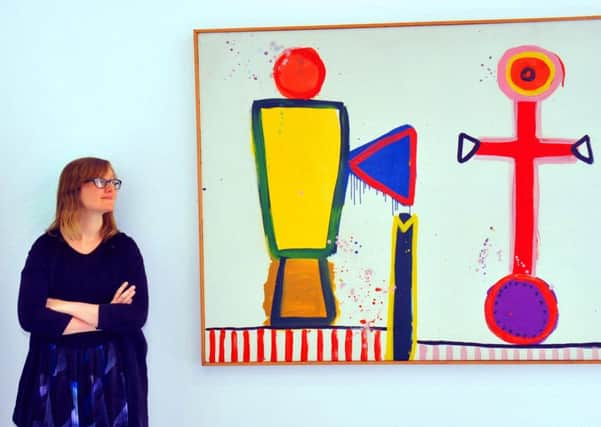The forgotten star who set David Hockney on path to stardom, in a Yorkshire city that didn’t want to be ‘provincial’


The exhibition she staged in 1958 at the city’s old art gallery, might have been a defining moment in the flowering of British post-war expressionism. It was certainly where two stars of the medium collided.
It had been long forgotten, not least when the obituaries of its subject were written, but six decades later, and with Wakefield now on a national stage, its significance is being radically reappraised.
Advertisement
Hide AdAdvertisement
Hide AdIt was Miss Kapp who put together an experimental exhibition featuring the work of Alan Davie, a precocious Scottish talent upon whom Leeds University had conferred a fellowship in the creative arts, and who was being feted as the British Jackson Pollock.
Among its visitors was a recent graduate of Bradford College of Art, named David Hockney. He and Davie exchanged words at an audience question and answer session, and in an autography Hockney would cite the experience as one of his first significant influences.
For Eleanor Clayton, Miss Kapp’s successor, piecing together the story, and tracing the ways in which the two men’s creativity converged, has been a labour of love.
Her own exhibition, placing Davie and Hockney’s works side by side for the first time, will run for three months from October at The Hepworth Wakefield, which enjoys a higher profile than the old gallery – whose building is now a school – ever did.
Advertisement
Hide AdAdvertisement
Hide Ad“Helen Kapp is something of inspiration to us here. She was incredibly radical. She felt that Wakefield Art Gallery could be somewhere people could really see the newest and the best,” Ms Clayton said.
Her 1958 exhibition was “an exciting moment in British painting”, she added, and from it could be traced the influence on Hockney of Davie’s work, and vice versa.
“It was a very early and quite brief period, when you consider how long and varied Hockney’s career has been.
“But it set him on a course of abstraction and exploring the canvas in new ways that he then took on and made his own.”
Advertisement
Hide AdAdvertisement
Hide AdBut while Hockney’s career went stratospheric, the reclusive Davie nosedived. He died five years ago in near obscurity.
“It’s very unusual to see these two artists together. It’s unusual to see Davie at all these days, because although in the early 1960s he was something of a superstar, his reputation dwindled,” Ms Clayton said.
“It’s really nice to celebrate him at a time when he was such an inspiration to younger artists of Hockney’s generation.”
The exhibition – which will serve as a counterpoint to next year’s Hockney retrospective at the National Portrait Gallery – might also show younger visitors a new side to him, she said.
Advertisement
Hide AdAdvertisement
Hide Ad“These are big, colourful, expressive, passionate paintings. And an experience and a transportation back to this moment in the 1960s, I think it will be a very exciting and beautiful experience.”
Miss Kapp, who died in 1978, did not wholly succeed in cementing Wakefield’s place in the art history books.
Alan Davie’s obituaries ascribed his breakthrough to an exhibition at Whitechapel in London, without mentioning that it was but a touring version of the one Ms Kapp had mounted in Yorkshire.
Simon Wallis, director of The Hepworth Wakefield said this year’s exhibition would “allow us to shine a light on the ambitious curatorial foresight of the former Wakefield Art Gallery which, in a time of post-war austerity, when traditional practices were overwhelmingly the norm, presented a programme designed to make the gallery a beacon for new contemporary art”